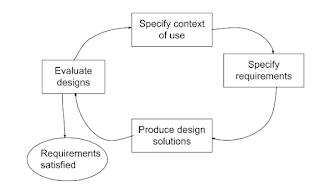User-Centered Design (UCD), there are various possible interpretations based on common UCD models and diagrams. Here are two potential interpretations:
1. User Journey Map:
The user journey map could be considered a "user center diagram" as it focuses on the user's experience throughout their interaction with a product or service. This diagram typically visualizes the different steps a user takes, their thoughts and emotions at each stage, and any pain points or areas for improvement. Placing the user at the center, the diagram helps identify opportunities to optimize the user experience across all touchpoints.
2. Stakeholder Map:
Another interpretation could be a stakeholder map, which visually depicts the various stakeholders involved in the design process and their relationship with the user. While not directly "user-centered," this diagram still considers the user by showing how different stakeholders influence and contribute to the user experience. This helps ensure user needs are represented and addressed throughout the design process.
Clarification Needed:
To understand which type of diagram you're referring to, it would be helpful if you could provide more context or share a specific example of a "UCD user centre diagram" you've encountered.
Additional UCD Diagrams:
Besides the two possibilities mentioned above, other UCD diagrams commonly used include:
- Empathy Map: Focuses on understanding the user's needs, thoughts, and feelings.
- Persona: Represents a fictional character embodying the target user group.
- Interaction Flow Diagram: Illustrates the sequence of user actions and system responses.
- Wireframe and Prototype: Low-fidelity and high-fidelity representations of the interface structure and functionality.
By understanding the different types of UCD diagrams and their purposes, you can effectively choose the right one to visualize and analyze your user-centered design process.


No comments:
Post a Comment